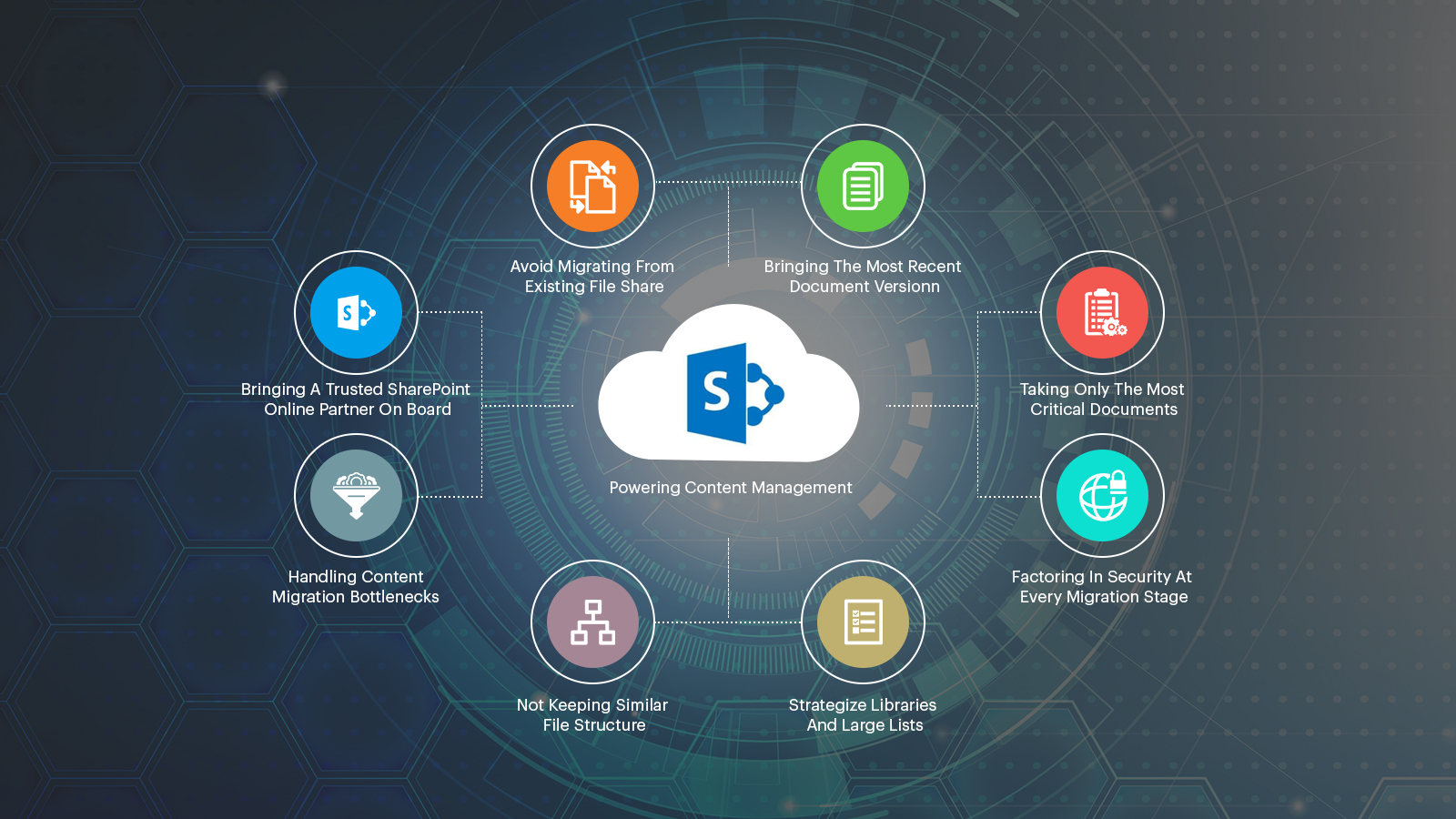Many businesses today leverage SharePoint Online as their primary content management system. Being a cloud-backed service, SharePoint Online enables enterprises to manage content, control information flow, and handle enterprise applications.
Owing to these reasons, SharePoint Online has successfully become a robust ecosystem for empowering teamwork, accelerating information accessibility, and driving collaboration initiatives across the organization.
If a business has already invested its resources in using Office 365, getting on SharePoint Online is a no-brainer. This platform provides simple remote access and low-cost storage. Nonetheless, migrating to SharePoint Online goes beyond a simple point-and-click migration.
For starters, most enterprise users may get frustrated when it comes to digging into the folder structures present in SharePoint. Here are some key tips to consider for using SharePoint Online for managing content.
Avoid Migrating From Existing File Share
Enterprise users come with the habit of moving almost everything just in case they may need it down the line. Nonetheless, transferring everything has its own disadvantages. If you migrate everything to SharePoint Online, you may not be able to find the most important files as they will be lost among all the unimportant ones.
So, the first step is to clear all the things and bring only what is required.
Bringing The Most Recent Document Versions
SharePoint always uses different version histories. Which is why, when enterprises are moving files from their old system to SharePoint Online, they should avoid bringing in files with different versions such as V1, V2, V3, and the like.
Taking Only The Most Critical Documents
First of all, a business has to move active documents only. Which means it is not necessary to bring log files that are a decade old. Also, businesses should avoid moving the content that they also not know much about in the first place.
Factoring In Security At Every Migration Stage
If it is possible, then it will be better to grant read-only access to files and documents that cannot be moved easily. In any case, avoid creating multiple copies of the same document because that will create confusion and escalate costs.
Strategize Libraries And Large Lists
SharePoint has room for over 5,000 items. However, businesses have to plan the capacity according to their needs. If a business has a scenario where it will be able to break its content into different document libraries or multiple sites, it will have to factor in a few points.
In many modern libraries and lists, especially the ones having more than 2,500 items, the indexes will be automatically developed but only up to 20,000 items. However, in the long run, auto-indexing will touch above 20,000 items, too.
If, however, a business is relying on third-party migration tools, there have been reports showing that indexing will be incomplete before hitting 20,000 items. In that case, a business must begin carrying out test-runs for making sure that indexing is established much before the migration process of the entire content library takes place.
Not Keeping Similar File Structures
When it comes to moving from SharePoint On-Premise or any legacy file-sharing ecosystem, organizing documents properly is all about making them secure. However, in SharePoint Online, a business may always want to avoid establishing security standards in deep folder structures while keeping it at the document library level or site level.
Because of this reason, it is integral to come up with fresh ways of content organization. The first thing is to leave the file structure that was present in the department-based leafy file-sharing platform. Second, you will have to use well-structured documents and content types by following already-defined procedures and policies.
Last but not least, sort the content among different publishing sites. For carrying out this task, it is essential that businesses rely on modern sites, such as Microsoft Teams sites, for driving collaboration efforts to the next level.
Handling Content Migration Bottlenecks
Sometimes, planning content migration is resource-intensive and time-consuming. In this case, it makes sense to not overwhelm business resources with such migration tasks. First off, the migration strategy has to be moved in pre-defined phases only.
Here is where a dependable SharePoint Online digital partner comes into play.
Bringing A Trusted SharePoint Online Partner On Board
Flexsin, a leading digital partner, has helped countless businesses from different verticals to unlock SharePoint Online’s productivity-centric content management features. As a dependable SharePoint migration consulting firm, the company has deep expertise in using SharePoint for driving a business’s collaboration capabilities to the next level.
From SharePoint migration to customization and development, Flexsin has the most experienced SharePoint Consultants with an excellent track record in delivering different enterprise-class solutions at scale. Businesses that want to unlock SharePoint to reengineer communication frameworks and content flow must rely on this digital strategic partner right away.


 Parimal
Parimal


